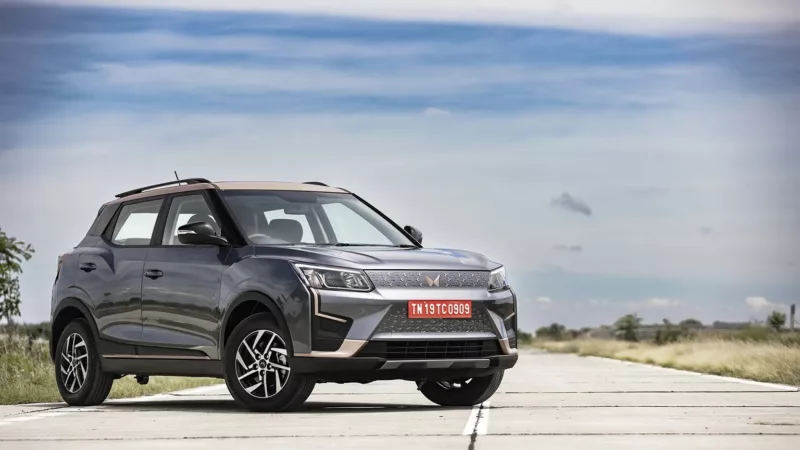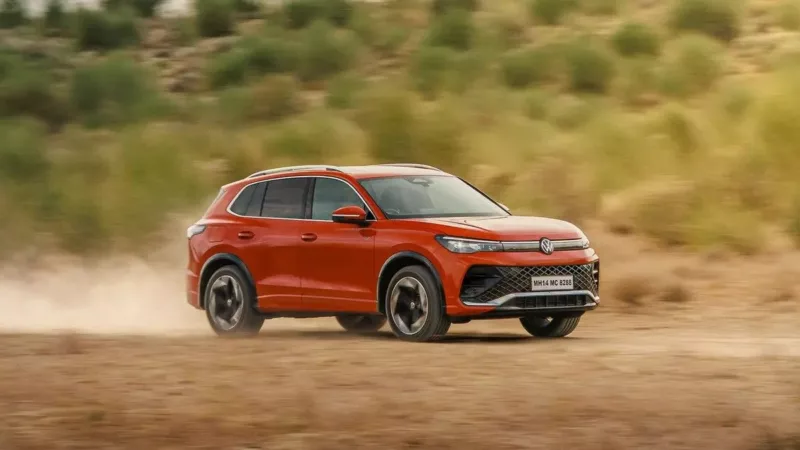With technology bringing positive changes to the automotive industry, our cars are becoming smarter, safer, and more capable. While several technological advancements have truly made vehicles better, ADAS, or the Advanced Driver Assistance Systems, has been one of the key onboard technologies that has revolutionised onboard safety. A suite of electronic functions specifically designed to improve driving comfort and safety, ADAS works primarily to minimise and prevent accidents mainly caused by human error by assisting drivers through active and passive safety systems. From a simple reverse parking sensor to fully automated park assist, all are different levels of ADAS that assist drivers in mitigating the chances of an accident. If you are wondering how ADAS is helping cars become safer, read on to know all about this revolutionary technology.
ADAS Cars on Spinny
- How Does ADAS Work?
- Active and Passive ADAS System
- Types of ADAS Technologies
- Levels of ADAS
- Advantages of using ADAS
- Disadvantages of using ADAS
- ADAS-Equipped Cars in India
- Summary for ADAS Full Form: A Guide to Advance Driver Assistance System
- FAQs About ADAS Full Form
How Does ADAS Work?

A comprehensive amalgamation of technology, the Advance Driver Assistance System is an array of several different components such as sensors, controllers, cameras, interfaces and powerful processors that work in synergy to analyse, integrate and interpret real-time driving data in order to make decisions for the driver and reduce the risk of an accident. Some of the most common sensors used in ADAS-equipped cars include long-range RADAR, LiDAR, SONAR etc. that work alongside imaging solutions such as 360-degree cameras that constantly examine the environment around the vehicle, providing this crucial information to an onboard computer that processes the data at a blink of an eye, taking decisions for the driver, much faster than the human reaction time. This helps the car avoid accidents before the driver can react, thereby saving countless lives.
Active and Passive ADAS System
Driving a car on the road is a complex task that involves both attention as well as reflex. Modern-day ADAS features suits achieve both of these through both active and passive technologies. Here is what both imply:
Passive ADAS Systems
Aimed at catering to the attention part of driving, passive ADAS systems are designed to inform/alert the driver about an unsafe condition or potential danger. With a passive ADAS onboard, the driver must take action himself to prevent/avoid accidents or mishaps. Common passive ADAS systems include:
- Anti-lock Braking Systems (ABS): Prevents the vehicle from turning and skidding in situations where emergency brakes are applied.
- Electronic Stability Control (ESC): Avoids over-steering and under-steering during unexpected driving scenarios.
- Traction Control System (TCS): Amalgamates the function of both AABS and ESC to help maintain proper traction during curves and turns.
- Rear-Camera: A camera that offers the rear-view of the vehicle for parking and reverse assist
- Lane Departure Warning (LDW): Alerts the driver when the vehicle moves out of its lane.
- Forward Collision Warning (FCW): Warns the driver to apply brakes to prevent forward collision.
- Blind Spot Detection: Alerts the driver if there is a vehicle in the blind spot.
- Parking Assistance: Alerts the drivers when objects approach the front and/or rear bumpers at low speeds for parking.
Active ADAS Systems
Aimed at catering to the reflex part of driving, active ADAS systems are designed to take direct action during an unsafe condition or potential danger. With an active ADAS onboard, the car itself takes action to prevent/avoid accidents or mishaps. Common active systems include:
- Automatic Emergency Braking: Automatically applies the brake to prevent collision with another vehicle/object including pedestrians, animals, hurdles etc. that come in the way of the vehicle’s lane.
- Emergency Steering: Automatically steers the car to prevent collision with anything that comes in the way of the vehicle’s lane
- Adaptive Cruise Control: Automatically adjusts the cruise control speed based on vehicles in front.
- Lane Keeping Assist and Lane Centering: Automatically steers the car to keep it in its late, even during curves.
- Traffic Jam Assist: Blends both adaptive cruise control and Lane Keeping Assist to offer semi-automated driving assistance during bumper-to-bumper traffic events as well as stop-and-go conditions.
- Self Parking: Automated and Self-Manoeuvred parking.
Types of ADAS Technologies
While there are a plethora of constantly developing ADAS technologies that help vehicles achieve safer and more reliable driving, here are a few of the most common ADAS technologies available in modern-day vehicles:
1. Collision Intervention Systems
Automatic collision avoidance technology is one of the major benefits of having ADAS equipped in a car. These collision intervention systems constantly detect the road ahead and behind to automatically prevent any oncoming collisions.
1.1 Automatic Emergency Braking
Automatic Emergency Braking detects potential collision obstacles, displays collision warning and automatically applies emergency brakes if there is no human intervention to avoid the collision. (Active ADAS)
1.2 Automatic Emergency Steering
Automatic Emergency Steering also detects potential collision obstacles and displays a collision warning. The system works in conjunction with AEB to automatically steer away from the obstacle and avoid the collision. (Active ADAS)
1.3 Automatic Reverse Braking
Automatic Reverse Braking is active in situations where the car is reversing. The system detects and displays a collision warning for obstacles in the rear of the car. Brakes are automatically applied if there is no intervention from the driver. (Active ADAS)
2. Collision Warning System
Collision Warning Systems alert the driver for any potential obstacles. These systems act as a first level of assistance for the driver to stay alert on the road.
2.1 Blindspot Alert
Driver warning to alert about a vehicle in the blind spot. (Passive ADAS)
2.2 Forward Collision Alert
Driver warning to alert about the detection of a potential collision with a vehicle ahead. (Passive ADAS)
2.3 Lane Departure Alert
Driver warning to alert about the vehicle departing from its lane and drifting over lane markings. (Passive ADAS)
2.4 Parking Collision Alert
Detection of potential collision obstacles during parking manoeuvres followed by a warning to avoid collision. (Passive ADAS)
2.5 Rear Cross-Traffic Alert
Detection and warning for side and rear-approaching vehicles during reverse manoeuvres. (Passive ADAS)
3. Driving Control Assist
Driving Control Assist actively help the driver while driving on city and highway roads.
3.1 Adaptive Cruise Control
Automatically adjusts braking and/or acceleration to maintain a uniform speed based on distance from the vehicle ahead. (Active ADAS)
3.2 Active Drive Assist
Automatic assistance of steering, braking and acceleration based on surrounding conditions and alerts. (Active ADAS)
3.3 Active Lane Assist
Automatic steering assist to keep the vehicle in its lane and prevent lane marking deviations. (Active ADAS)
4. Parking Assist
Parking assist systems are a relatively new development as part of the ADAS suite on car. These systems have so far only appeared on flagship luxury cars.
4.1 Active Parking Assistance
Automated control of steering, braking and accelerating during parking manoeuvres; Some systems might need the driver to be in charge of shifting, braking and steering; Some systems can also be fully capable of parallel parking and/or perpendicular parking. (Active ADAS)
4.2 Remote Park Assist
Fully automatic parking without the need for the driver to be present inside the vehicle with automated control over brake, steering, shifting, and acceleration. (Active ADAS)
5. Other Driving Assistance Systems
While not advertised as part of any ADAS suites, these driving assistance systems are still helpful for drivers.
5.1 Automatic Headlamp
Automatically turns on the headlamps during darker environments, automatic high and low beam switching as well as automatic light direction determination as per driving condition. (Active ADAS)
5.2 Reverse Camera
Provides the rear-end view of the vehicle’s surroundings to assist reversing manoeuvres. (Passive ADAS)
5.3 Brake Assistance
Automatic application of brakes, emergency brakes with automatic brake pressure determination based on vehicle surroundings. (Active ADAS)
5.4 Driver Monitoring System
Monitors driver and driving behaviour to alert when the driver is not fully engaged in driving through eye movement and head tracking. (Passive ADAS)
5.5 Heads Up Display
Image projection of vehicle data and/or navigation cues in front of the driver’s line of sight. (Passive ADAS)
5.6 Night Vision
Improves vision at night by projection of high resolution and/or enhanced frontal view on the instrument cluster. (Passive ADAS)
5.7 Roll Over Mitigation
Mitigates vehicle rollover by braking one or more wheels and reducing the power of the engine in sudden and/or evasive turning manoeuvres.
5.8 Tyre Pressure Monitoring
Monitors tyre pressure in all four wheels and alerts the driver when the pressure is low.
5.9 Speed Alerts
Alerts the driver when the vehicle overspeeds.
Levels of ADAS

With the ultimate extension of ADAS leading to a fully automated vehicle, there are several levels of ADAS based on how much involvement the driver needs to carry on driving tasks. The Six levels of vehicle automation as developed by the SAE (The Society of Automotive Engineers International) are as follows:
Level | Title | Description |
0 | No autonomy | The driver is totally in command of the vehicle which may have systems like ABS installed. |
1 | Driver Assistance | May have a single system like passive or adaptive cruise control to assist driver. |
2 | Partial driving automation | The onboard computer can steer, accelerate and brake without human intervention but does require driver’s presence behind the wheel. |
3 | Conditional driving Automation | The onboard computer can assess traffic conditions and the like, and can independently act on them, but still requires human presence in the driving seat. |
4 | High driving automation | Self driving vehicles that can operate within certain geographical parameters or on certain routes within speed limits. |
5 | Full driving automation | A vehicle without any steering wheel or brakes requiring no input from a physical driver whatsoever. Not yet available to the general public. |
Advantages of using ADAS
A majority of road accidents today are caused due to human error. Advance Driver Assistance Systems, aims to mitigate human error in order to avoid and/or prevent accidents. Cars with ADAS onboard have proven instrumental in reducing the number of accidents that might have been caused in the absence of these active as well as passive assistance systems.
As a result, ADAS has played a pivotal role in achieving enhanced safety for not just your car, but also for pedestrians, animals and public property. With fewer accidents and mishaps, ADAS also help you reduce the overall cost of ownership since your vehicle would spend less time in a repair garage. Moreover, with an audio-visual recording system onboard, real-time vehicle recording can come in handy in case of accidents and/or legal troubles.
Disadvantages of using ADAS
While there is no doubt that ADAS has helped vehicles become much safer, however, like other technologies, there still are a few downsides that must be considered. First things first since the proper functioning of an active ADAS system depends on the analysis and processing of vehicle surroundings, it is crucial that roads are marked with proper warning signs, lane markings etc. which sadly is not the reality in several parts of the nation. This can make the onboard ADAS systems make false interventions that can even cause an accident instead of its prevention.
Furthermore, the continuous assistance of active ADAS can make the driver feel irritated at times and can hamper the overall driving experience. Other than that, with ADAS actively assisting overall driving, there can be situations where a driver may become far too dependent on ADAS which being a piece of technology is prone to failure which can be catastrophic.
ADAS-Equipped Cars in India
Are you planning to get a car in India that is equipped with ADAS features? If so, then here is a list of the ADAS-equipped cars in India which strikes a balance between safety, cost efficiency, and style.
| Car Model | Price Range (₹) | Engine Options | Transmission Options | ADAS Features |
| Honda Amaze | 9.70 – 11.20 Lakh | 1.2L Petrol | Manual / CVT | Lane Keep Assist, Adaptive Cruise Control, Forward Collision Avoidance, Road Departure Mitigation |
| Hyundai Venue | 12.44 – 13.62 Lakh | 1.2L Petrol, 1.0L Turbo Petrol, 1.5L Diesel | Manual / iMT / DCT | Forward Collision Warning, Lane Departure Warning, Lane Keep Assist, High Beam Assist |
| Honda City | 12.85 – 16.55 Lakh | 1.5L Petrol | Manual / CVT | Adaptive Cruise Control, Lane Keep Assist, Auto High Beam Assist, LaneWatch Camera |
| Mahindra XUV 3XO | 13.99 – 15.56 Lakh | 1.2L Turbo Petrol, 1.5L Diesel | Manual / AMT | Adaptive Cruise Control, Automatic Emergency Braking, Traffic Sign Recognition, Lane Keep Assist |
| Kia Sonet | 14.72 – 14.82 Lakh | 1.0L Turbo Petrol, 1.5L Diesel | iMT / DCT / Manual | Forward Collision Warning, Lane Keep Assist, Lane Departure Warning, High Beam Assist |
| Honda Elevate | 15.41 – 16.83 Lakh | 1.5L Petrol | Manual / CVT | Auto High Beam, Adaptive Cruise Control, Lane Keep Assist, Collision Mitigation System |
| Hyundai Creta | 15.98 – 17.71 Lakh | 1.5L Petrol, 1.5L Diesel | Manual / CVT / Automatic | Blind Spot Collision Avoidance, Lane Departure Warning, Adaptive Cruise Control |
| Mahindra Thar Roxx | 12.99 – 23.09 Lakh | 2.0L Petrol, 2.2L Diesel | Manual / Automatic | Adaptive Cruise Control, Lane Departure Warning, Automatic Emergency Braking |
Summary for ADAS Full Form: A Guide to Advance Driver Assistance System
With technological advancement improving each and every aspect of our lives, advanced driver assistance systems continue to be one of the most integral technological developments that hold the potential to revolutionise the way we drive. With road accidents claiming millions of lives worldwide, ADAS plays a central role in reducing accidents worldwide and saving countless lives. With more and more cars in India now being offered with ADAS onboard, the future of vehicle safety in India is bright. Now that you know all about ADAS, here are some of India’s best ADAS cars.
FAQs About ADAS Full Form
What is ADAS in cars?
ADAS or Advance Driver Assistance System is a collection of onboard technology including cameras, sensors, processors etc. that is designed to assist driving in order to mitigate accidents and achieve overall safety.
Which cars have ADAS in India?
Cars like the Hyundai Creta, Mahindra XUV700, Honda City, MG Astor, MG Hector etc. are some of the best ADAS Cars in India.
How many levels of ADAS are there?
There are Six levels of vehicle automation as developed by the SAE (The Society of Automotive Engineers International)
What is Level-2 ADAS?
Level-2 ADAS is the second level of the six ADAS levels of vehicle automation. In a LEVEL-2 ADAS-equipped vehicle, a system of cameras, sensors, processors and other inputs can control the vehicle’s braking, steering and acceleration automatically. However, this system still requires a human driver to take control.
How does ADAS work?
ADAS-equipped cars make use of data from different sensors such as long-range RADAR, LiDAR, SONAR etc. that work alongside imaging solutions such as 360-degree cameras that constantly examine the environment around the vehicle, providing this crucial information to an onboard computer that processes the data at a blink of an eye, taking decisions for the driver, much faster than the human reaction time.





 ne big family!
ne big family!